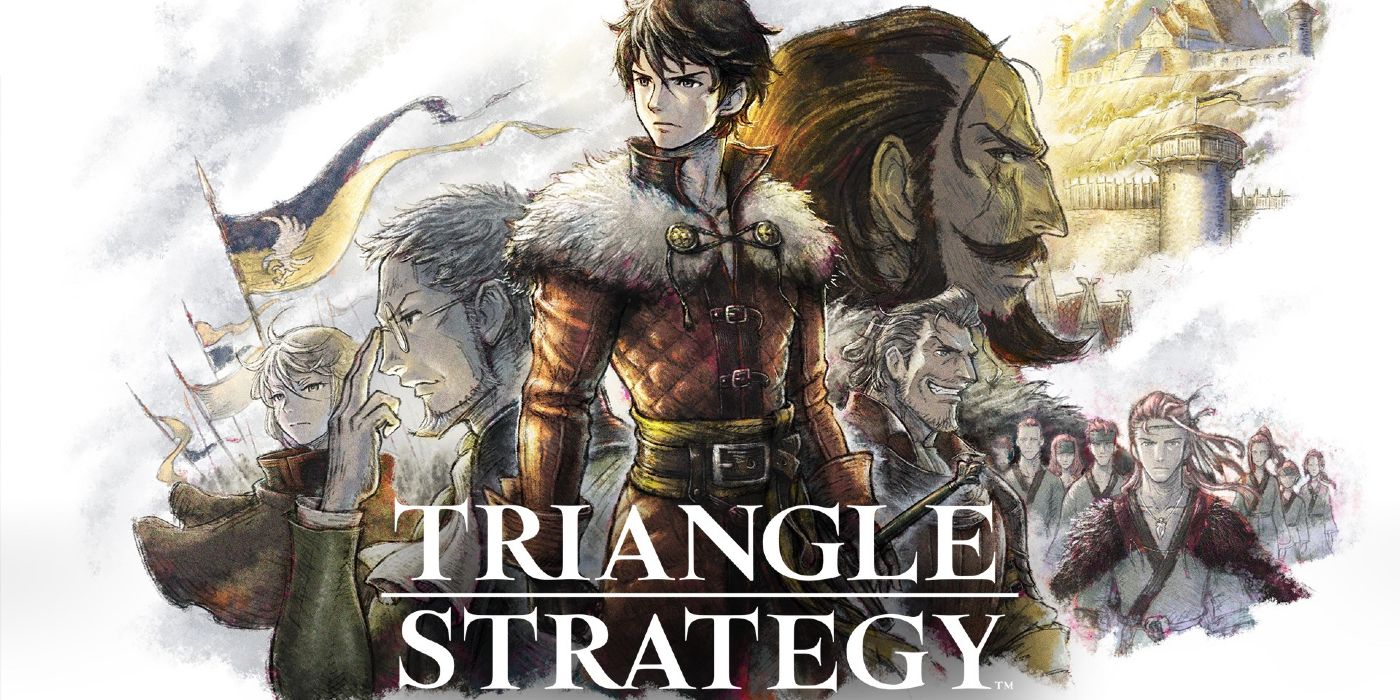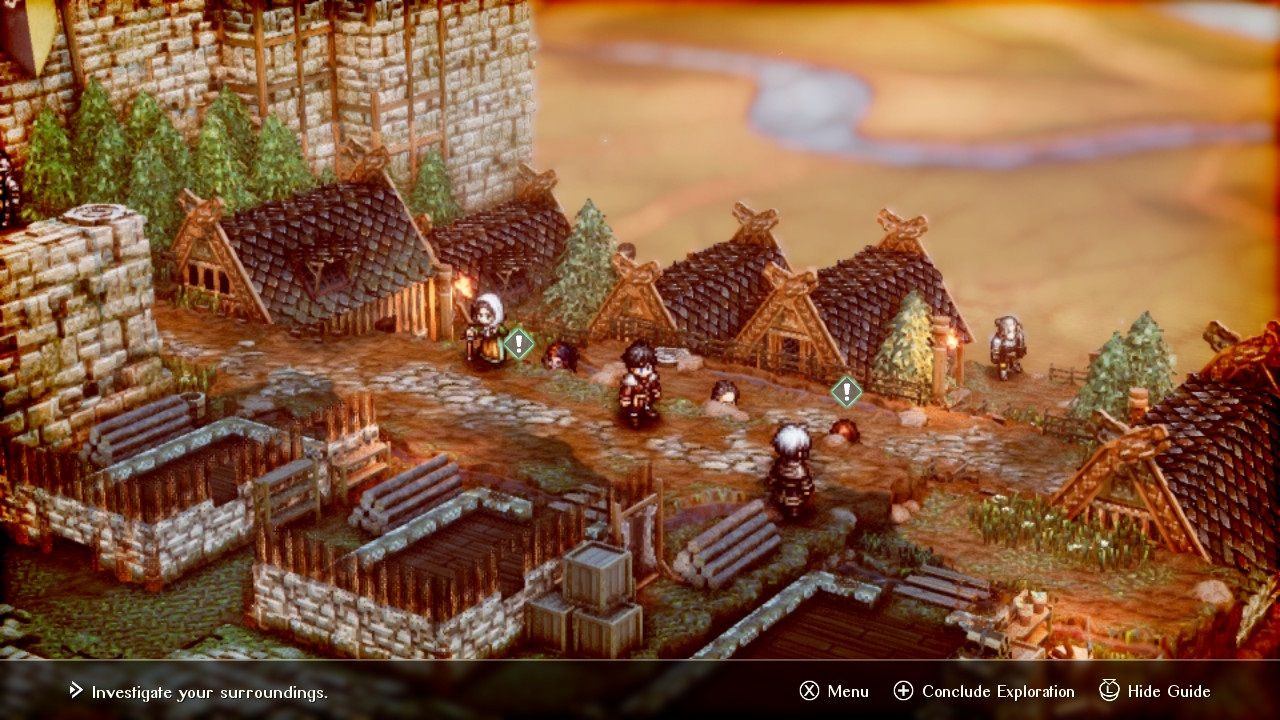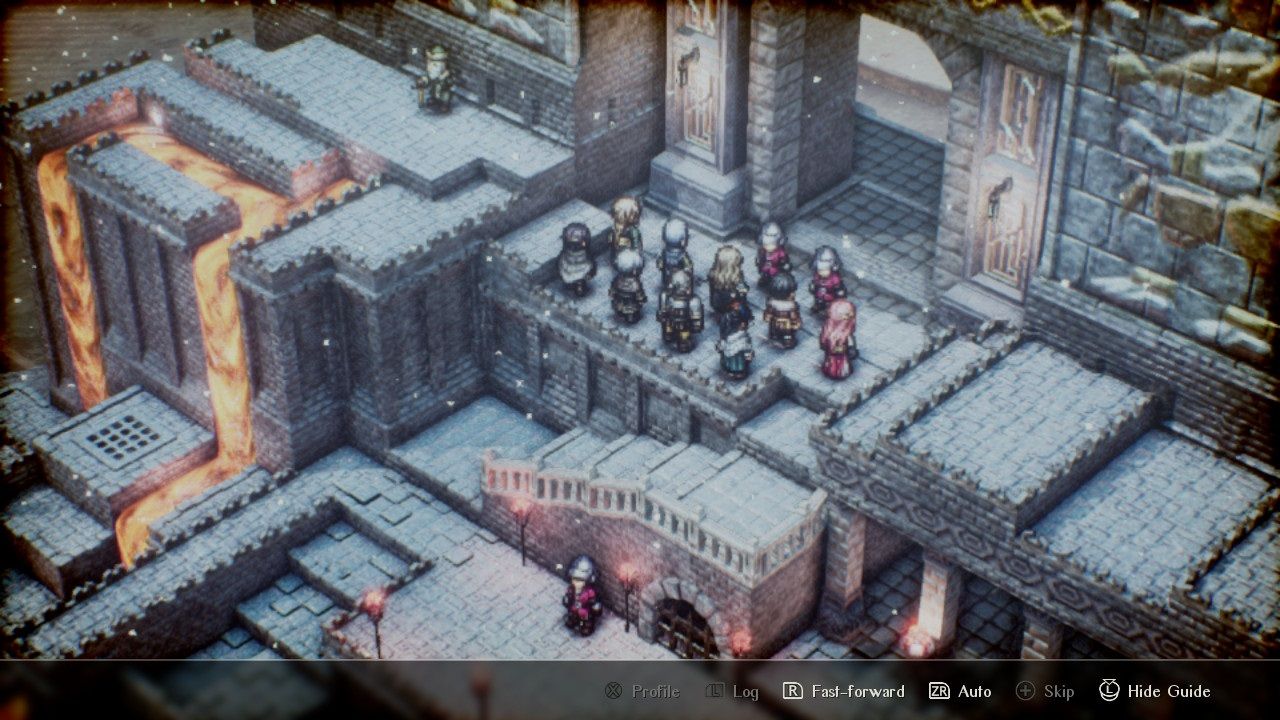Triangle Strategy is a strategy-based roleplaying game with hybrid 2D and 3D graphics developed by Square Enix for the Nintendo Switch. Triangle Strategy's progression is narrative-driven, immersing players in a complex fantasy world rife with troubled nations, political intrigue, and hidden secrets. While gameplay mirrors certain elements seen in Octopath Traveler, the story and mechanics of Triangle Strategy have unique twists that allow the game to stand up well as its own title. Despite this, lengthy dialogue scenes and slow narrative progression may be a frustrating hurdle for those used to more fast-paced Square Enix titles.
The primary story of Triangle Strategy follows the young lord Serenoa Wolffort as he takes over the noble house of Wolffort and accepts his betrothal to Frederica Aesfrost. Serenoa must act as the mediator between three lands, the Kingdom of Glenbrook, the Grand Dutchy of Aesfrost, and the Holy State of Hyzante, which were all once at war, but now enjoying a fragile time of peace. The three lands have come together to open a mine that will help each area flourish, but tension remains high, with many eager for an excuse to return to conflict.
The gameplay of Triangle Strategy is made up of three primary phases: narrative, exploration, and combat. The exploration mechanic opens specific locations up for players to wander as Lord Serenoa. During this time, players will look for items scattered around the maps, communicate with NPCs and main characters, and discover information that is important to the narrative. Finding the information in the form of notes of hearsay from NPCs is a crucial task during this phase of gameplay, as it often gives players sway in decision-making later in the story. These discoveries can even allow players to persuade characters to their cause during voting sessions, which are used to determine the course of the overarching story.
Combat in Triangle Strategy is similar to the battle mechanics of Fire Emblem, with players possessing control over multiple characters on a grid-based battlefield. There are three main phases of battle: pre-preparation, movement, and action phases. During preparation, players will have the ability to move their units around limited portions of the map, and change the directions they may be facing. The movement phase allows players to move the active character to different areas on the map, and the action phase is for attacking.
Each character possesses certain skills, like a second action movement, better speed, or a mount. When characters attack an enemy and have a friendly team member on the opposite side of their target, the team member is given an action of opportunity, encouraging players to strategically place their units for optimal damage. Characters can also use the terrain of the battle map for advantage, with the high ground boosting certain attacks of either the player's units or the opposing force's fighters. While the combat in Triangle Strategy can feel like an engaging game of chess, there is also limited opportunity to practice early in the game, which may be frustrating for those who prefer a more fast-paced RPG experience.
The most important and time-consuming part of Triangle Strategy is the narrative. While the story is rich and interesting, with characters that are easy to become attached to, players will spend more time thumbing through text-based dialogue and voice-acted scenes than exploring or engaging in combat. While players will have the opportunity to influence the direction of the story through responses made by Serenoa in certain situations, these moments are also spread out between lengthy character conversations, creating slow progression. Players may also need to open character profiles often, using the "X" button while they are actively talking, to keep track of the numerous characters involved in the story.
While those who like story-based games or visual novel-style gameplay may enjoy the events offered in Triangle Strategy, those interested in fast combat, exploration, and classic RPG mechanics may become frustrated with the amount of dialogue that is required to move forward. Additionally, areas outside the main storyline aren't available until several chapters into the game, requiring players to grind through the narrative portions with minimal breaks.
Despite this, the graphics throughout Triangle Strategy are an exciting part of gameplay. Characters each possess an illustrative portrait for their profiles in the classic Final Fantasy-reminiscent art style. To add to this, the combination of 2D and 3D graphics for the world's environments combines classic pixel and spite visuals with dimensional and immersive 3D spaces. While the number of explorable spaces showcasing these aspects of Triangle Strategy are more limited than some may like, the time spent combing through each location is rewarding and takes the grind out of talking to NPCs and entering random houses.
The journey through the story of Triangle Strategy is a captivating experience, especially for those who enjoy high-stakes fantasy plotlines with political intrigue and well-rounded characters. While it will likely appeal to those who enjoy choice-based games and narratively rich worlds, it may not be the best pick for Square Enix fans who like the fast-paced combat of recent Final Fantasy games, or who prefer open-world and exploration driven gameplay. Triangle Strategy creates an experience where players must think and choose actions carefully, and where decisions matter. This focus makes it an excellent choice for those who prefer a good story over hack-and-slash battles and aimless combat.
Triangle Strategy releases for the Nintendo Switch on March 4, 2022. Screen Rant was provided with a Nintendo Switch code for the purpose of this review.



